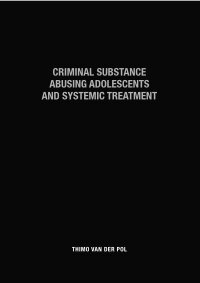By Kevin T. Wolff, Michael T. Baglivio, Joshua A. Lang
This study examined differences among youth in deep-end juvenile justice residential placement who did, and did not, present with co-occurring disorders. The prevalence of co-occurring mental health and substance use/abuse issues was found to be 19%, far lower than that of prior work. Researchers demonstrated more similarities than differences between youth with and without co-occurring disorders, both in terms of their criminal histories and the prevalence of their criminogenic needs. Additionally, the residential programs across Florida appear to provide treatment at similarly high levels of integrity, as measured by 1) matching treatment services to the highest three dynamic risk assessed criminogenic needs, 2) providing dosage of treatment at the number of contact hours and weeks of service provision as dictated by the SPEP assessment, and 3) providing high quality treatment as per FDJJ’s operationalization of SPEP treatment quality. Importantly, while treatment provision occurred uniformly, youth with co-occurring disorders do not appear to benefit as equally well from treatment matching to assessed needs, though such matching was certainly beneficial for such youth. Additionally, the recidivism rates were substantively identical between youth with and without co-occurring disorders, indicating (as they presented with similar criminogenic needs and criminal history) youth with co-occurring disorders may not be expected to pose higher risk to public safety or likelihood of reentering the justice system.
New York: John Jay College of Criminal Justice, 2024. 96p.



